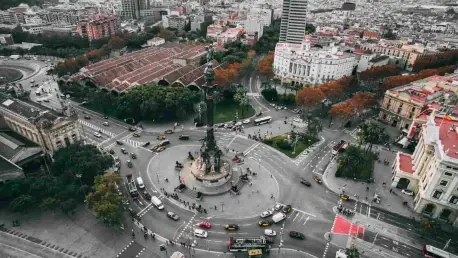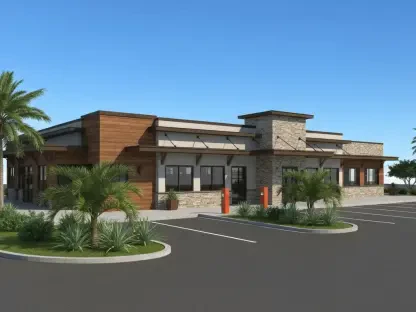Barcelona’s food culture stands as a vibrant emblem of its thriving tourism industry, arguably drawing more attention than even its architectural marvels and sun-kissed beaches. At the heart of this culinary experience is La Boqueria, an ancient market that is not only a commercial hub but an enduring symbol of Barcelona’s gastronomic tradition. Nestled amidst the vibrant cityscape and cultural landmarks, this market attracts nearly 60,000 daily visitors, providing a sensory feast that showcases the very soul of Catalan cuisine. Its allure transcends mere shopping; it presents a living tapestry of local flavors, ranging from the freshest seafood and meats to delectable local specialties. La Boqueria embodies the city’s culinary heritage, offering rich narratives of Catalonia’s agricultural and maritime bounty through its colorful arrays of produce and artisanal goods. Such culinary experiences are critical in drawing tourists from around the globe, each seeking to savor the unique tastes and textures that define Barcelona’s food scene.
The Essence of Catalan Cuisine: A Journey Through La Boqueria
Entering the market beneath its stained-glass portico, visitors immerse themselves in a whirlwind of vibrant colors, enticing aromas, and bustling activity. Over 300 stalls form a labyrinthine display of locally sourced produce, from succulent strawberries and figs to calçots, a beloved type of scallion. These sensory delights go beyond mere display; they represent the agricultural richness of Catalonia, where the Mediterranean climate nurtures a bounty that tourists are eager to experience firsthand. Amidst the tilting, tapestry-like rows, the market unveils lavish deli counters displaying an assortment of olives and world-renowned jamón Ibérico, celebrated for its delicate and savory flavor. Yet, it is the legendary fish and seafood counters that occupy La Boqueria’s central prominence, boasting a dazzling array of fresh delicacies sourced directly from the Mediterranean Sea. These selections, including hake fillets, red prawns from Palamós, and oysters from the Ebro River delta, provide enviable freshness and variety that satiate all appetites.
In addition to its market offerings, several bars and kiosks surrounding La Boqueria craft fresh ingredients into tantalizing tapa experiences. Here, visitors can savor oysters, jamón, and Catalan fideuà, a noodle-based dish akin to paella. These casual yet diverse experiences prove to be a primary attraction, allowing tourists an accessible way to sample the myriad flavors that Barcelona is renowned for. The vibrant ambiance paired with authentic tastes transforms culinary exploration into a social affair that invites patrons, from near and far, into the joy of communal feasting. Historical roots seep into every bite; tapas may have emerged during King Alfonso X of Castile’s reign or through Andalusian practices. Regardless of origin, they provide the experiential core of Barcelona’s culinary scene, inviting eager tourists to engage with the city through relish and conversation.
Culinary Adventures Beyond the Traditional Market
The lure of Barcelona extends beyond La Boqueria’s vibrant confines to the varied eateries scattered across the city’s tapestry. With an impressive array of 10,000 bars and restaurants ranging from revered bodegas to Michelin-starred establishments, Barcelona entices millions of tourists seeking gastronomic experiences unmatched in diversity and quality. This thriving hospitality sector fuels economic growth that ripples across the city, benefiting local business owners, including restaurateurs, hoteliers, and transportation providers. As the appetite for travel restaurant experiences intensifies, technology enhances accessibility, enabling tourists to discover local culinary gems with ease. Dining apps adeptly pair with ride-sharing platforms and mobile payment services, streamlining exploration and ensuring convenience in a bustling urban environment.
The dynamic interconnectivity of travel and technology has altered Barcelona’s culinary landscape significantly. Tech-savvy visitors can seamlessly navigate the city, minimizing challenges traditionally associated with travel and maximizing their enjoyment of local cuisine. Simultaneously, it empowers local businesses, allowing them to adapt offerings to meet evolving consumer needs. As tourists immerse themselves in authentic tastes, there exists an ongoing demand for local culinary innovation paired with global accessibility—a balance Barcelona continues to strike admirably within its food scene.
Evolving Urban Landscapes and Community Experiences
Barcelona’s culinary narrative is intertwined with its urban evolution, particularly visible in neighborhoods like Sants. Historically tied to the textile industry, Sants experienced a significant transformation following deindustrialization in the 1960s. Today, this district rises as an understated luxury destination, embraced by projects revitalizing its urban embrace with an artistic flair. Developments like the Jardins de la Rambla de Sants—a sky garden echoing New York’s High Line—and sophisticated establishments like the Nobu and Moxy hotels reflect the neighborhood’s metamorphosis into a tourist focal point brimming with elegance while retaining its historical authenticity.
Tourists frequenting Sants often seek out-of-the-ordinary experiences, inclined toward serene environments over boisterous traditional tourist spots. Hidden gems like the Guri bistro and Wines&Copas offer distinct local flavors alongside an intimate dining experience, illustrating a growing preference for authenticity over convention. Visitors further benefit from tourist tools such as the Barcelona Card, enabling cultural engagement at key attractions like the Picasso Museum and Parc de Ciutadella. Such initiatives not only amplify cultural appreciation but also foster deeper connections between travelers and city heritage.
The Fusion of History and Modernity in Tourist Experiences
In the realm of cruise tourism, Barcelona serves as an irresistible gateway to the Mediterranean. Travelers like Ed and Eloise Simons have embraced cruising from the city’s port, where multifaceted vessels offer rich onboard amenities, including diverse dining options, spa services, and engaging entertainment. Emphasizing the seamless contemporary travel experience, Ed leverages banking apps to manage international expenses, exemplifying the integration of technology in travel planning. This trend underscores how Barcelona’s modern infrastructures support tourism, enhancing the allure of its rich historical and culinary heritage against the backdrop of a tech-facilitated tourist experience.
Such advancements foster a harmonious blend of historical grandeur and cutting-edge conveniences that define Barcelona’s visitor experience. Travelers engage with the city’s past through ventures like visiting La Sagrada Familia, striking them with awe at centuries-old architectural brilliance still under completion. The timeless allure, enhanced by modern comforts, leaves enduring impressions on visitors who depart with a deep appreciation for Barcelona’s dynamic fusion of past and present, defining it as a multidimensional travel destination.
Harnessing Culinary and Technological Trends for Future Growth
Barcelona’s food culture is a vibrant highlight of its flourishing tourism scene, often surpassing the appeal of its architectural wonders and sunny beaches. Central to this gastronomic journey is La Boqueria, a historical market serving as both a bustling commercial hub and a cherished symbol of Barcelona’s culinary traditions. Nestled within the dynamic cityscape, this market draws nearly 60,000 visitors daily, providing a sensory feast that captures the heart and soul of Catalan cuisine. Beyond a mere shopping experience, La Boqueria offers a lively mosaic of local flavors, showcasing everything from the freshest seafood and meats to irresistible local specialties. It represents the city’s rich culinary heritage, offering narratives of Catalonia’s agricultural and maritime abundance through its vibrant displays of produce and handcrafted goods. These culinary delights are pivotal in attracting tourists worldwide, eager to sample the unique tastes and textures that define Barcelona’s distinctive food scene.









